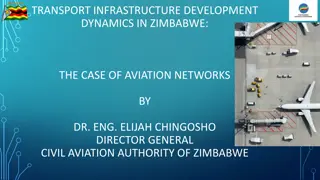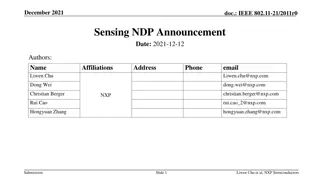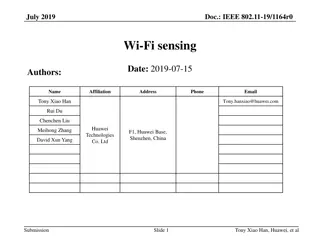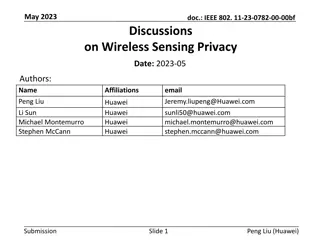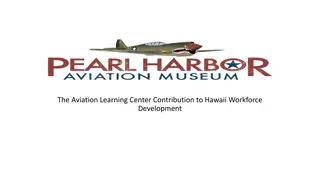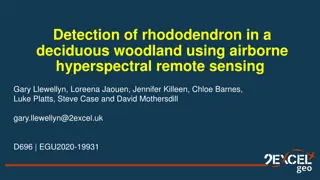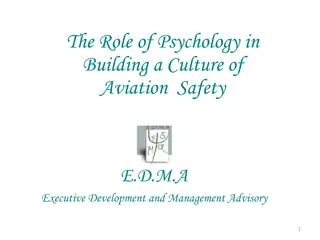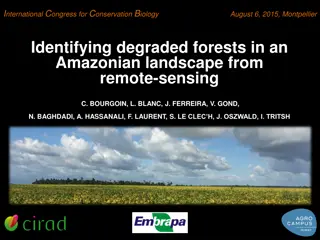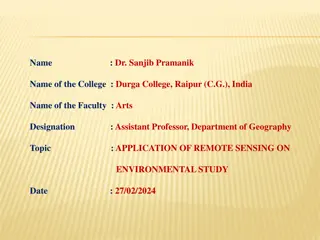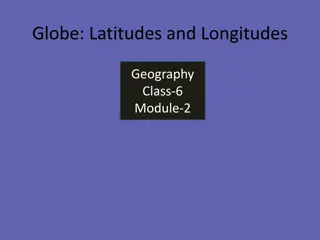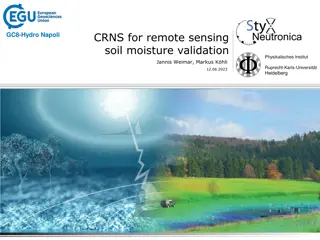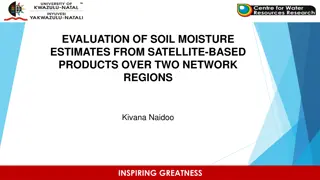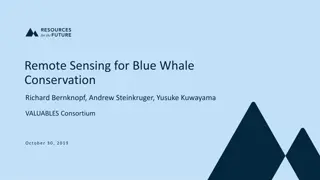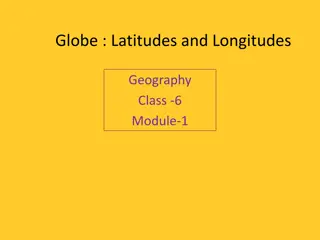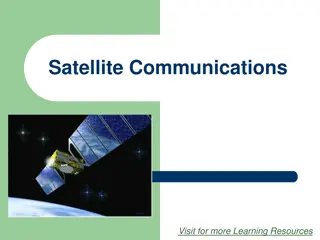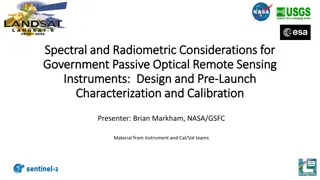Satellite Products for Aviation Remote Sensing Needs in High Latitudes
Addressing the specific needs of aviation remote sensing in high latitudes, this content explores the importance of satellite products, variations in equipment requirements, data expectations, and the significance of cloud products for aviation safety. Feedback from aircraft operators emphasizes the challenges and opportunities in improving data visualization and coverage for weather data parity. Discussions on gravity waves, turbulence, and the role of machine learning techniques further enrich the understanding of aviation remote sensing requirements.
Uploaded on Sep 27, 2024 | 0 Views
Download Presentation

Please find below an Image/Link to download the presentation.
The content on the website is provided AS IS for your information and personal use only. It may not be sold, licensed, or shared on other websites without obtaining consent from the author. Download presentation by click this link. If you encounter any issues during the download, it is possible that the publisher has removed the file from their server.
E N D
Presentation Transcript
Satellite Products for Aviation Remote Sensing Needs in the High Latitudes JPSS/GOES-R PG/RR Summit Carl Dierking UAF/GINA
Beyond METARs Needs vary with equipment: Commercial vs Private IFR vs VFR Floats, skis, wheels, helipads, etc. Common Data expectations: Extremely timely and highly detailed Life threatening impacts Observations preferred Information enroute not always available.
Northern Latitudes need LEO and GEO GEO Pacific Circulations/Systems Good resolution in mid latitudes Exponential parallax displacement High frequency updates One satellite for hemisphere LEO - Polar Circulations/Systems Very high resolution (375m 1km) Minimal parallax Frequent updates near poles (~ hourly) Multiple polar-orbiting satellites
Strong Interest in Cloud Products (GEO & LEO) CLAVR-x Products Cloud Top Height Cloud Base Height Cloud Phase Cloud Type Cloud Top Temperature How much interpretation should be expected of pilots? Cloud Phase (CIRA Slider) Cloud Top Height Cloud Base Height
Aircraft Operator Feedback The work to date by the JPSS team shows considerable promise significant work is needed to craft the visualization of these products, to make them interpretable for the aviation community. One problem that has to be overcome is how to deal with the limits of swath data from polar orbiting satellites, where coverage may be hit or miss along the route a pilots is evaluating for cross-country flight. Tom George, Aircraft Owners & Pilots Assn Bandwidth and area coverage are two of Alaska s biggest challenges regarding digital data. Improved satellite communications infrastructure, on the ground and in the air, could solve both problems. The fusion of geo-stationary and polar-orbiter satellite data will be a step forward, but we also need more polar-orbiting satellites providing near-real-time imagery and observations in order to achieve weather data parity with the rest of the country. Andrew McClure, FAA Cloud Cross-section ANC-JNU (Yoo-Jeong Noh - CIRA)
Gravity Waves and Turbulence MODIS 7.3 um WV VIIRS True Color (Nrn AK) Best High Pass Filters? Severe Turbulence over Hawaii (Scott Bachmeier Jan 12, 2018) https://cimss.ssec.wisc.edu/satellite-blog/archives/26745 How do impacts vary with Aircraft Type? We're still figuring out which filters (we have 4), which of the 3 bands to use (though generally the top), and what signatures are turbulent. However, Tony (Wimmers) is using AI to find the patterns and suggests it's quite good at doing so. - Nate Eckstein, NWS How can machine learning techniques assist? GOES 17 6.95um WV
Experimental Icing Products MIRS Cloud Liquid Water CLAVR-x Cloud Phase Icing Product Alaska (NCAR) We're mainly using Icing Product Alaska (IPA), developed by NCAR through FAA- AWRP (Avn Wx Research Program). We supplement that guidance with BUFKIT, but over the whole state that's a lot to sort through all the soundings. NUCAPS or Gridded NUCAPS might assist with an analysis, but we also use satellite imagery to look at the cloud top phase, temperature. Nate Eckstein (AAWU)
Challenges and Questions How can GEO and LEO perspectives for aviation products be merged to take advantage of the strengths of each? How should the impact of aviation hazards identified by satellite (such as gravity waves) be calibrated for aircraft size, speed, and direction? How can objective methods be developed (such as AI) to alert on aviation hazards turbulence, icing, volcanic ash, etc?



